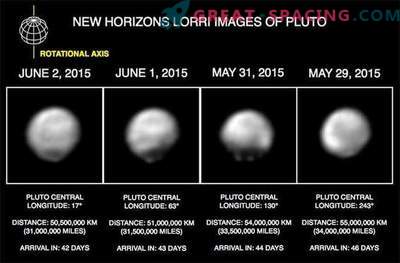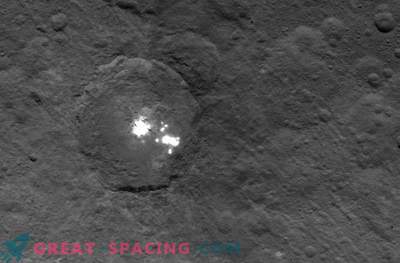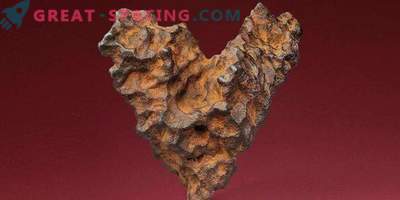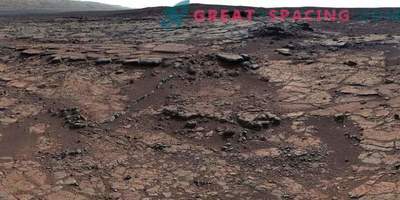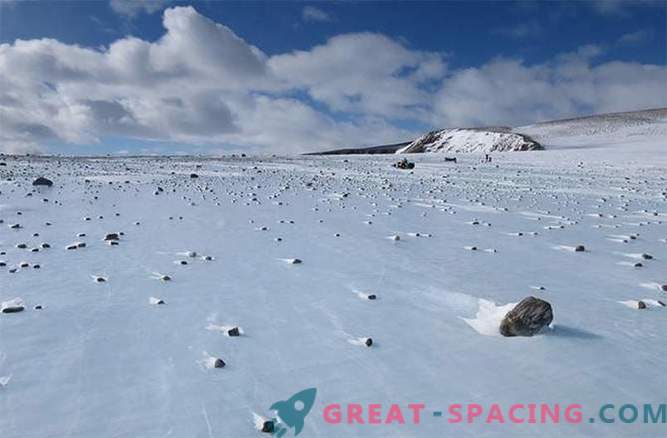
Only a hardy person is able to voluntarily be in isolated Antarctica and work in the cold for several weeks or months. Every year, however, meteorite hunters land on the continent, because this is the ideal place to find these space rocks. NASA recently reported in detail about the return of a group of nearly 570 meteorites in a Tumblr report. Here are some of the images from this post, along with a detailed description of what this means for our history of the solar system.
Every year a group of researchers disembark to Antarctica and catalog the meteorites they have found. The annual Antarctic Meteorite Search (ANSMET) has found about 20,000 space stones here since 1976.
According to Discover Magazine's 2015 article, there are three reasons why meteorites are so easy to find in Antarctica. First, many meteorites are made of metallic iron, which quickly degrades in a humid climate (while in Antarctica is dry). Secondly, meteorites are very clearly visible on the ice of Antarctica. The latter is the ice cover of Antarctica, which has stalled from falling into the sea because of the mountains; this allows the wind to blow away the layers until meteorites come to the surface.

The Smithsonian Institution, a member of ANSMET, praises the program as "an inexpensive, but guaranteed way to return meteorites from the Moon, Mars, and from previously unexplored asteroids." Many thousands of meteors bombard the Earth every year, and only a fraction of the larger ones reach its surface. Bombing by meteorites blew up rocks on the Moon, Mars, Vesta and other places, which gives us the opportunity to see the interior of these places without visiting them. In the case of Mars, it also allows you to compare the current atmosphere with the past atmosphere, which is reflected in meteorites.

According to the Smithsonian, a team of four to eight scientists work in Antarctica for six weeks from November to January during the warmest time on the continent. They are trying to collect meteorites systematically and without bias.
Researchers conduct searches in two stages. They first make parallel runs on a snowmobile on top of the ice, which has no snow and is known as "blue ice". If meteorites are found, scientists disembark and begin searching on foot. This allows them to pick up meteorites, even 1 cm in diameter. Many places are so sown with meteorites that researchers have to return over several seasons.

The next stage of preservation is the delivery of meteorites to the meteorites curation department at the NASA Space Research Center. “They are dried, chopped, sawed, weighed and photographed in controlled atmosphere cabinets previously used to process lunar samples,” wrote Smithsonian. Scientists can ask for samples if they are interested in them by looking at them, with the result that about 75 applications were filed for 600 new samples found in a year.
Some of the most famous meteorites found include the first asteroid from the moon, the first asteroid from Mars, and the infamous Martian meteorite known as Allan Hills 84001 (ALH84001). About 10 years ago, this meteorite got into the news (if I may say so) when one group of scientists declared that it could contain evidence of Martian life, but this hypothesis still continues to be discussed today.

One of the potentially significant meteorites will be a pattern returning from Mars today. Such a mission was identified as a priority by scientists of the National Science Foundation in the ten-day Review of 2013-2022. If we can compare the meteorite from the Martian past with the current sample, it would give us more understanding of how Mars was formed. Some of his timeless secrets include what he was made of and where his entire atmosphere disappeared (the atmosphere that allowed water to flow on its surface).
The sample return mission, however, has its own headaches. Nothing has ever left Mars to return to Earth, so a spacecraft must be developed for transporting samples. There is also a small but urgent problem of pollution. Due to the possibility of Martian life, measures must be taken so that the sample does not pollute the Earth - and that the Earth’s environment does not pollute the sample. While there is still no funding for the sample return mission, two new rovers from Europe and NASA are expected to start work on Mars in 2018 and 2020, respectively. This will help gather more scientific evidence so that this mission can occur.



























